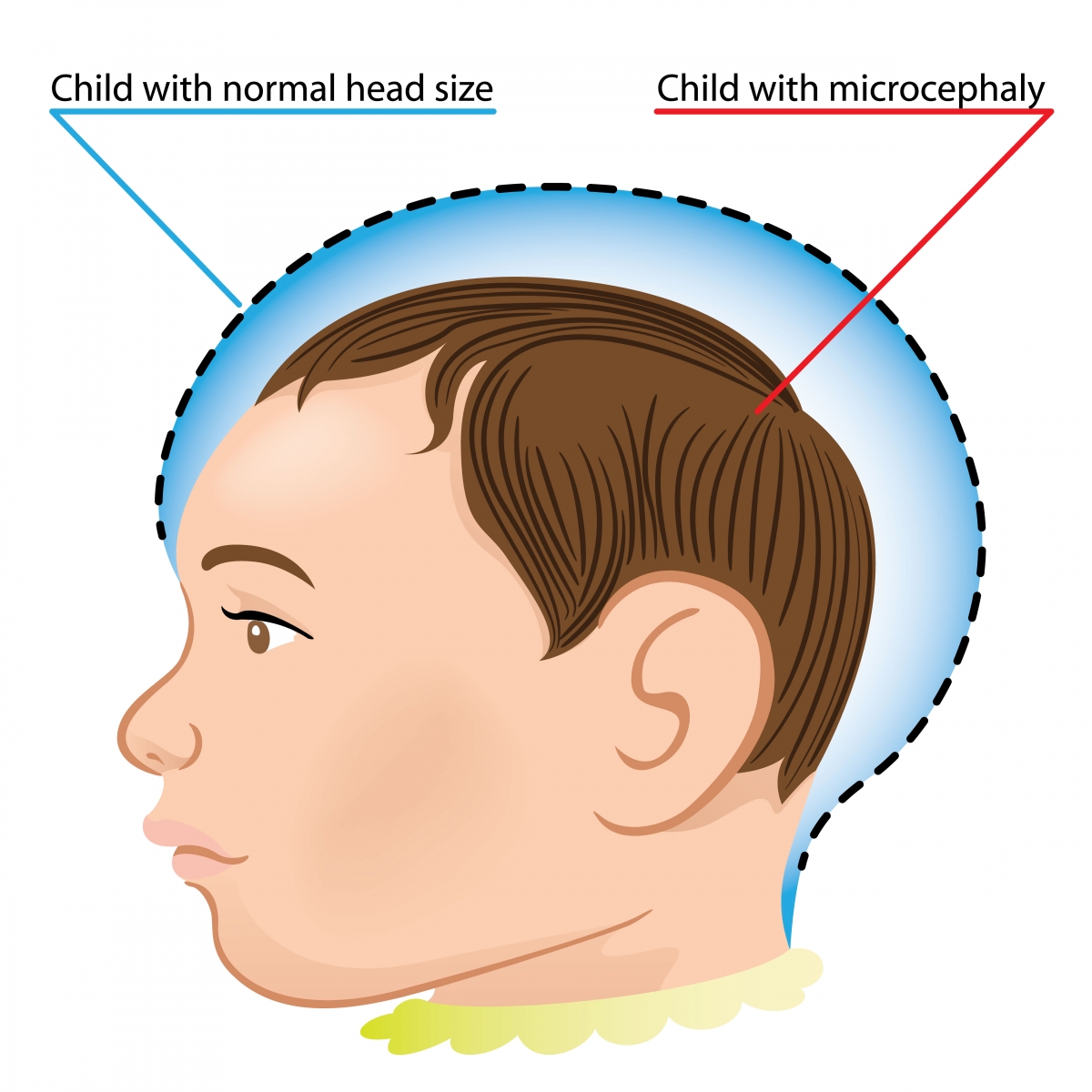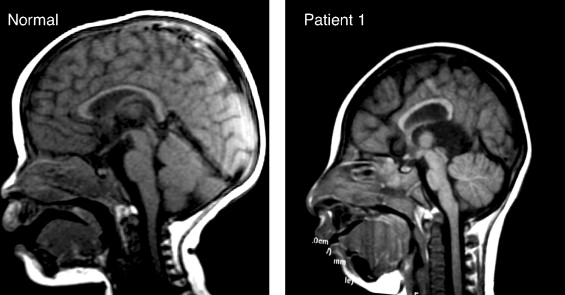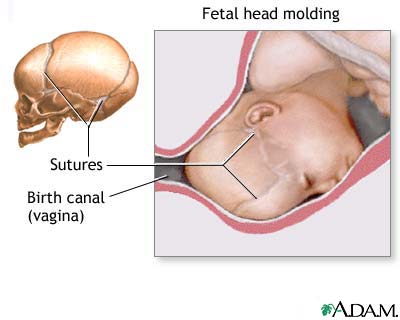 |
| The blue shaded area represents the head size of a normal size head (22.5" for a male baby) compared to a child with microcephaly |
The word microcephaly comes from micro plus the Greek word kephale meaning head which literally translates to micro (or small) head. The Centers for Disease Control (CDC) defines microcephaly as a birth defect that results in a smaller than average head (when compared to babies of the same age and sex). As might be expected, their brain tends to be smaller than average and might not have developed properly.
 |
| A normal size brain (left) and a brain affected by microcephaly (right). |
Microcephaly is not a common condition. According to state birth defect tracking systems, it occurs in somewhere between two (2) babies per 10,000 live births and twelve (12) babies per 10,000 live births.
How and when can it be diagnosed
Diagnosis during pregnancy can sometimes be accomplished by use of an ultrasound examination. If this process is used, it should be done either late in the second (2nd) trimester or early in the third (3rd) trimester.
Diagnosis after the baby is born is done by measuring the circumference of the newborn's head as part of a routine medical exam. The provider compares this measurement against population standards according to sex and age. It (microcephaly) is defined as "a head circumference measurement that is smaller than a certain value for babies of the same age and sex". This measurement value is usually less than two (2) standard deviations below the average. The measurement value might also be designated as less than the 3rd percentile. This means that the baby's head is extremely small compared to babies of the same age and sex.
 Microcephaly can be diagnosed by measuring head circumference (HC) after birth. Although HC can be influenced by molding of the head (where pressure from the birth canal "molds" the head into an oblong rather than round shape [pictured at right]), measurement should still be taken on the first day of life because commonly used birth head circumference charts are based on measurements taken before 24-hours of age.
Microcephaly can be diagnosed by measuring head circumference (HC) after birth. Although HC can be influenced by molding of the head (where pressure from the birth canal "molds" the head into an oblong rather than round shape [pictured at right]), measurement should still be taken on the first day of life because commonly used birth head circumference charts are based on measurements taken before 24-hours of age.What are the causes of and risk factors for microcephaly
Sadly, the cause of microcephaly in most infants remains unknown. In some cases, it was determined to have been caused by a change in their genes Research by the CDC has shown that exposure to the following during pregnancy can lead to the condition:
Certain infections during pregnancy including rubella, toxoplasmosis, or Cytomegalovirus.
Malnutrition which could either be from not getting enough food or not getting the proper nutrients.
Exposure to harmful substances such as alcohol, certain drugs, or toxic chemicals.
Interruption of the blood flow to the baby's brain during development.
Babies born with microcephaly have been reported among mother who were infected by the Zika virus while pregnant. As a result, CDC researchers have been able to determine that exposure to the virus can cause microcephaly as well as other severe fetal brain defects.
Other problems associated with microcephaly
Babies with microcephaly can experience a myriad of other problems depending on the severity of the microcephaly. Common problems include: seizures, developmental delay(s) (such as with speech, sitting, standing or walking), intellectual disability, problems with movement or balance, feeding issues (such as difficulty with swallowing), hearing loss, or vision problems.
How is microcephaly treated?
It is a life-long condition. Currently, there is no known cure - or standardized treatment - for microcephaly. Because symptoms can range from mild to severe, treatment options can also vary. For example, if a baby is born with mild microcephaly, they might only experience a smaller-than-normal head; still, that child will require routine check-ups to monitor their growth and development.
For more severe cases, babies will require care and treatment that focuses on managing the associated health problems. Additionally, developmental services delivered early in the child's life can both improve and maximize the child's physical and intellectual abilities.
For additional information: Facts about Microcephaly

No comments:
Post a Comment